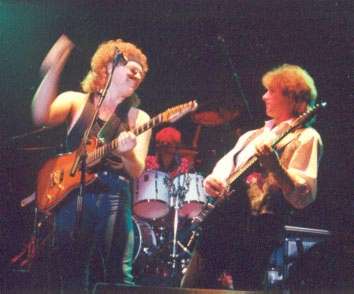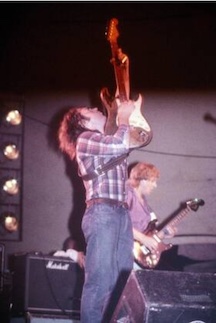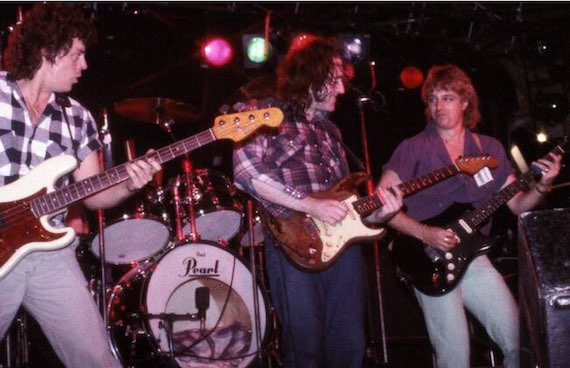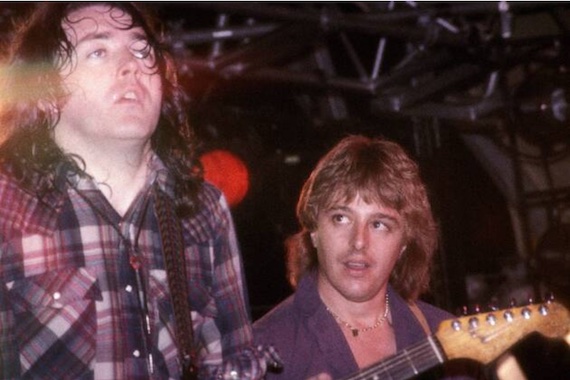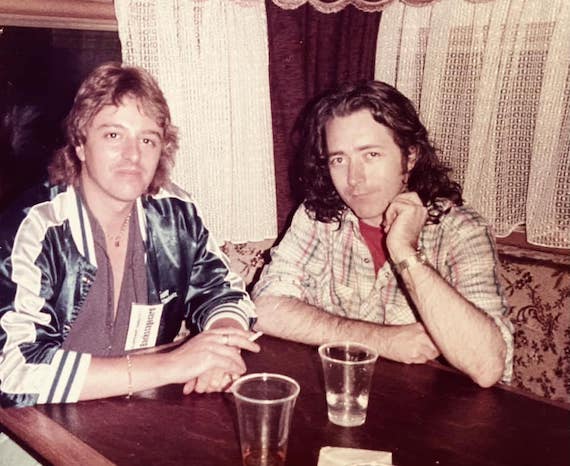Apr 20 2024
The Young Lad from Cork
The Young Lad from Cork
On the 20th of April, 1961 a young lad living at No.27 MacCurtain Street in the city of Cork won a music talent competition at Cork City Hall. The talent show was sponsored by “The Evening Echo” in conjunction with Ideal Homes Exhibition. The young lad in question was one Rory Gallagher who had only recently turned 13. Yes, that Rory Gallagher! Five years later he would seek his fame and fortune: first with his band Taste, and then later on as a solo artist.
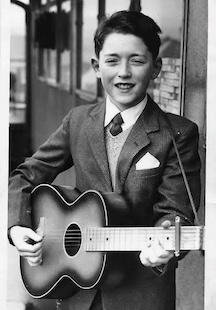
Rory atop the Examiner’s building
He would return often to play sold out concerts at this same City Hall, most notably in 1974 when Tony Palmer was filming his documentary on Rory, the well received “Irish Tour ’74,” that chronicled his shows in Dublin, Belfast and Cork. Rory’s live album from that tour was mostly recorded at Cork City Hall and is estimated to have sold in the millions worldwide.
This picture of Rory was published on the front page of Cork’s Evening Echo two days after his winning the talent competition. The photo was taken on the roof of the Examiner building on Academy Street.
The roof was used as an outdoor studio for generations. Natural light, privacy, and — possibly the clincher — convenient, as the photographic department occupied the top floors of the building.
— Blake Creedon, a sub-editor at the Irish Examiner Group
Below is an advertisement for the talent competition placed in the Cork Evening Echo
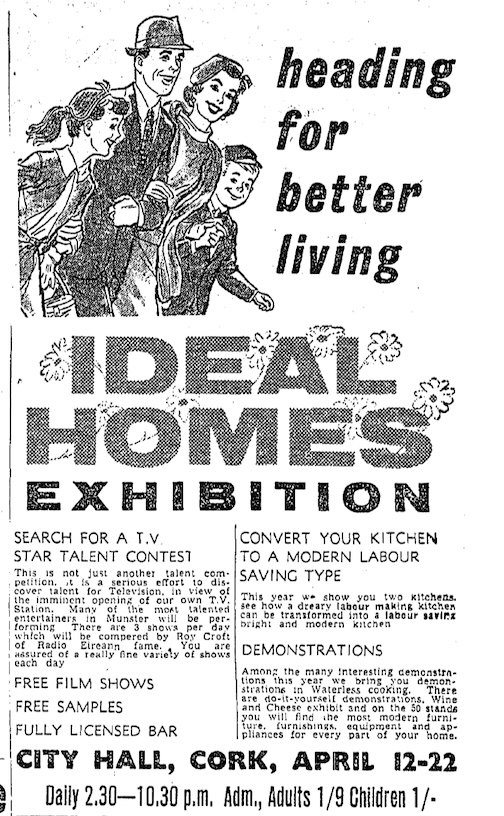
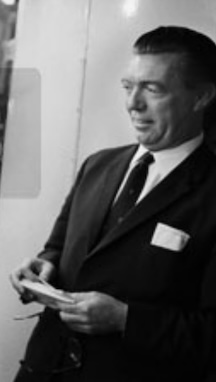
Roy Croft, compere for the talent show
The talent competition and home exhibition ran for 10 days between April 12 – 22, with 50 stands of home furnishings, kitchen displays, demonstrations of waterless cooking,
wine and cheese exhibits, free samples, free film shows, a fully licensed bar, and 3 shows a day showcasing many of the most talented entertainers in Munster.
The Talent show was compered by Roy Croft of Radio Eireann fame. His former radio programme, Beginners Please, was Ireland’s first broadcast talent show. Clearly Roy was in his element here!
An advertisement for this new T.V. talent competition pointed out that this wasn’t to be any old competition but a serious effort to discover talent for Television.
Ireland was set to get their very own T.V. station later that year, and it was time to find the talent for it! The new T.V. channel was launched as Telefis Eireann on 31 December 1961, later renamed RTE in 1966. Rory’s brother Donal remembers the contest:
I remember going to the City Hall to see my brother perform at this contest being held in the balcony area of the City Hall, which was screened off with large theatrical drapes from the main downstairs (which was being used by the exhibitors) and the space had its own stage constructed.
From memory, Rory performed Lonnie Donegan’s Rock Island Line or and maybe The Big Grand Cooley Dam (Woody Guthrie). In his summation, the compere Roy Croft referred to my brother’sfire, energy and passion,in the delivery of the songs. After his qualification, he was asked to go to the Examiner’s offices the following day to have his picture taken.
I hadn’t done my homework and wasn’t allowed to go with him, but when the picture was published, the family and I were all so thrilled and proud of Rory. — Donal Gallagher
Some of the winners from the competitions were: the Harmonicats, the Wanderers Vocal Group, the Drifters Modern Dance Band, and the Cranitch Quartet of Rathduff. The last one is of particular interest.
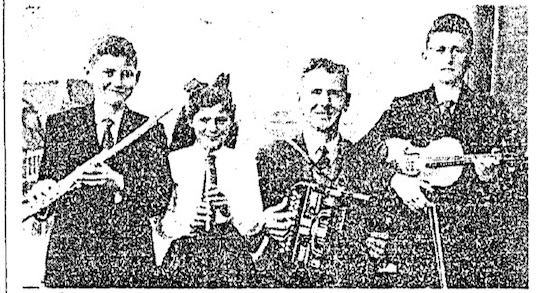
The lad on the right in the picture of the Cranitch Quartet is Matt Cranitch. He went on to establish a significant reputation as a traditional fiddle-player, winning All-Ireland Fleadh Cheoil titles, The Fiddler of Dooney and Oireachtas Crotty Cup. He has performed in many parts of the world — at concerts and festivals, as well as on radio and television. He is also the author of The Irish Fiddle Book which is in its 4th printing so far.
Besides both of them competing in the T.V. Talent Competition, they had also met at a cousin’s farm near Blarney, as Rory’s brother Donal relates:
Matt Cranitch and Rory would have met on our cousin’s farm, at Birch Hill, near Blarney, Co. Cork (Matt’s folks were neighbors). I remember a farmyard party for a relative returning to New York, my brother brought his guitar and the Cranitch family played, encouraging Rory to join in with the traditional playing. –Donal Gallagher
And there is another connection between Matt Cranitch and Rory Gallagher. On the 18th of November in 1993, the Cork Institute of Technology convinced Rory to headline their inaugural Cork Arts Fest, playing an acoustic gig in the West Atrium of their Bishopstown campus. It was Matt Cranitch who organised the concert.
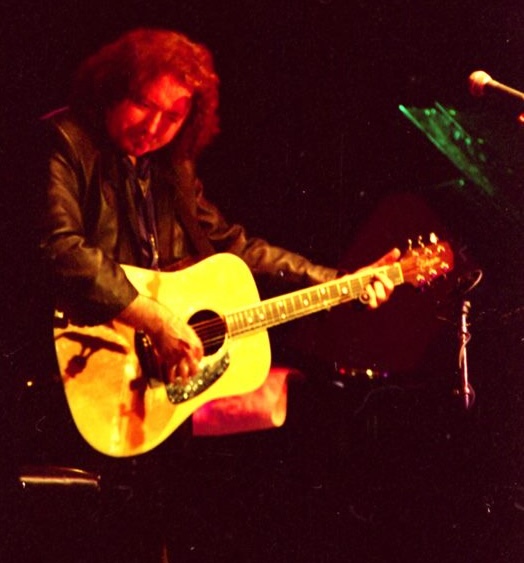
I did know Rory, and indeed I was responsible for organising the concert… It took place at Cork Regional Techinical College (Cork RTC). It was subsequently renamed as Cork Institute of Technology (CIT), and very recently designated Munster Technological University (MTU)! Rory’s uncle Jim Roche had been principal of that institution, and there had been a long-standing family promise that Rory would do a concert in the college. Jim died prematurely, but still the promise held good. I was a lecturer/professor in Cork RTC at the time, and it fell to me to follow up on the Rory concert. — Matt Cranitch
Uncle Jim had been an inspiring figure to the Gallaghers and Rory readily agreed to the concert. Donal recalls though that Rory didn’t think that a full rock band would lend itself to the college’s atrium and that an acoustic set would be more appropriate:
Our uncle Jim Roche had been principal at CIT and he had passed away some time before so Rory agreed to do the concert as a tribute to Jim as they were very close. I think Rory felt a full band rock concert would have been too raucous as a tribute to Jimmy but he was a bit daunted at the prospect of doing a set on stage by himself so he brought over Lou Martin to play piano and Mark Feltham joined in as well on harmonica so it was quite the night — Donal Gallagher, Irish Times 2018
According to Peter Somers, Timetabling Coordinator of CIT, his concert was the highlight of the inaugural Cork Arts Fest and was also an acknowledgement of his uncle – the late Jim Roche who was the first principal of the then Regional Technical College – with whom Rory had a very close bond.
Rory died less than two years after his performance in the West Atrium of the Bishoptown campus, a concert organized by Matt Cranitch, a contestant from that long ago talent search at Cork City Hall. There were many key moments in the life of the lad who once lived at no. 27 MacCurtain Street, but on that day, the 20th of April, 1961, Ireland found their television star. He was Ireland’s first Rock Star and boy did he shine ever so brightly.
Share on Facebook
